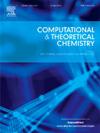Numerical simulation of space charge transport properties of polypropylene laminated paper
IF 3
3区 化学
Q3 CHEMISTRY, PHYSICAL
引用次数: 0
Abstract
Polypropylene laminated paper (PPLP) serves as an exemplary insulation material for high-temperature superconducting direct current (DC) cables. However, the accumulation of internal space charge can distort the local electric field intensity, leading to material degradation. Currently, the majority of space charge transport analyses for PPLP rely on experimental measurements, with its microscopic processes necessitating further exploration. This paper delves into the interaction and evolution processes among various microscopic particles through numerical simulation. Adopting the bipolar carrier model, we analyze the impacts of temperature, mobility, trap density, and trap energy level on the space charge distribution within PPLP by integrating the interface charge theory and trap theory of multilayer dielectrics. Our findings reveal that as temperature decreases, the space charge injection effect diminishes and stabilizes after reaching a certain threshold. Lower mobility results in charge accumulation at the corresponding electrode, causing electric field distortion and a more pronounced damaging effect, whereas charge accumulation in the middle region is less significant, leading to lesser damage. Furthermore, lower trap levels and densities result in weaker charge accumulation, with charges migrating more towards the opposite electrode, thus exhibiting heteropolar charge accumulation at the electrodes.

求助全文
约1分钟内获得全文
求助全文
来源期刊

Computational and Theoretical Chemistry
CHEMISTRY, PHYSICAL-
CiteScore
4.20
自引率
10.70%
发文量
331
审稿时长
31 days
期刊介绍:
Computational and Theoretical Chemistry publishes high quality, original reports of significance in computational and theoretical chemistry including those that deal with problems of structure, properties, energetics, weak interactions, reaction mechanisms, catalysis, and reaction rates involving atoms, molecules, clusters, surfaces, and bulk matter.
 求助内容:
求助内容: 应助结果提醒方式:
应助结果提醒方式:


